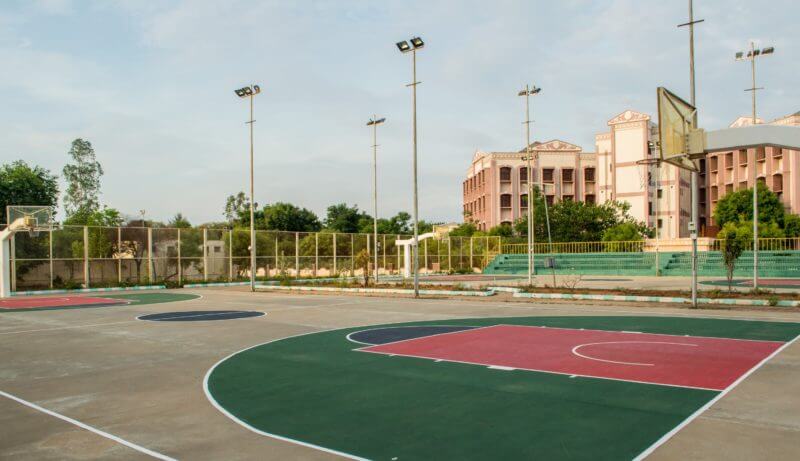Content Attributes
The clothes we wear to work or school can have a huge impact on how we perform in our given roles. Uncomfortable or restrictive uniforms make it difficult to be productive. While impractical or bad quality clothing can serve as an added distraction for workers and students alike.
High-quality professional uniforms ensure optimal focus and confidence for anyone who wears them. Research confirms this, showing how the clothing you wear affects both your physical and mental performance.
But what makes a uniform professional? Read on to find out some of the distinguishing qualities to look for when choosing a uniform.
1. Easy Maintenance
Ensuring your staff or students always look professional means providing them with a uniform that doesn’t require any special treatment or care in a fabric that retains its shape and texture wash after wash.
If spillages and stains are a common factor in your industry, look for stain-repelling finishes or fabrics that let go of stains during the first wash. You should also select non-iron fabric so it’s easy for your staff to project a professional image with minimal effort.
2. Practical and Appropriate Style
The best way to offer brand recognition is to provide your staff with a uniform that works for your type of business while complementing your workers’ job profile.
In this sense, the most professional kind of uniform is one that is appropriate for the environment your employees work in, and practical for the role they need to perform. For some companies this could mean a shirt and tie, for others, sweatshirts and stretchy pants could be the key to a professional yet practical uniform.
3. Comfort
Staff and students wearing a uniform need to do so for hours on end. As such, it’s vital that they are comfortable at all times and in all temperatures.
For workers in cold or outdoor environments, this could mean providing extra layers within a standard uniform, such as a branded jacket or sweatshirt. And for employees in physical jobs involving a lot of reaching and bending, flexible fabrics and an adaptable design make for a more comfortable working day.
3. Identifiability
Choosing a uniform that stands out from your competitors’ is one way to consolidate brand recognition. Although, you should make sure it stands out for the right reasons and not because of a garish color choice or outdated design.
You may also want to include more specific identifying aspects to your uniform. For example, including ‘security’ or ‘staff’ on a uniform can make these workers easier to identify for clients, while engraved name tags add a personal touch as well as added accountability.
4. Complementary Color Palette
Most large organizations decide on a color palette as part of their branding and design so it’s likely you already have a color in mind for your uniforms. But, if you do decide to select a mixture of colors to represent your organization, choosing complementary hues within a limited color palette ensures visual harmony and a more professional image.
5. Durability
Durability is a big concern for parents buying their child’s school uniform, but it’s an even bigger concern for employees investing in uniforms for all their staff. With this in mind, you should go for the most well-made, durable options you can find to ensure the uniform you choose lasts as long as possible.
Here, you’ll need to consider the kinds of tasks your staff do and how you can make their uniforms stand up to these repetitive tasks. For example, if your employees spend a lot of time kneeling down, getting pants with reinforced knee panels could be a good move.
6. Inclusivity
Uniforms present an image of equality so it’s important that the clothing you choose allows all your staff or students to feel included in this image for greater group cohesion and commonality.
For example, allowing female students to wear pants as part of their school uniform is essential in a modern learning environment. This move towards a non-gendered uniform policy shows that all students – regardless of gender, race, religion, socio-economic background, or otherwise – are part of the same group.
7. Functionality
No matter what industry you work in or where you study, the main purpose of any uniform is to allow you to perform your role without restrictions or discomfort.
For supermarket cashiers, functionality might mean pants with a stretchy waistband for long hours sitting at the cash register. For mechanics, a functional uniform could be one with enough pockets to fill with the tools they always need on hand and flexible seams allowing for a wider range of motion.
Whatever the role demands, a professional uniform designed with functionality in mind is always the best way to make everyone’s job easier.
8. Safety
Uniforms can help keep staff or students safe by making it easier to identify an intruder in unauthorized areas. But the uniform itself should also have the optimal safety of the wearer in mind.
For example, while a tie can form part of a professional uniform for security workers, these can make it easier for an assailant to strangle your security worker. As such, you should always provide clip-on security ties for any workers who could be at risk from such an attack. Likewise, staff working near moving vehicles or outdoors at night need a uniform that includes a reflective jacket or hi-vis vest to stay safe.
Distinguishing Qualities of Professional Uniforms
From a nurse’s scrubs to a schoolchild’s polo shirt and pants, a mechanic’s overalls to a gymnast’s leotard – professional uniforms are far from one-size-fits-all.
Although, there are certain factors that determine whether a uniform is the right choice for your organization. By keeping these in mind, it will be a lot easier for those representing you to perform to the best of their ability.
For more of the latest updates on everything from tech to travel, be sure to check out our other blog posts!



